Ashish A. Mahabal
Alert Classification for the ALeRCE Broker System: The Real-time Stamp Classifier
Aug 07, 2020
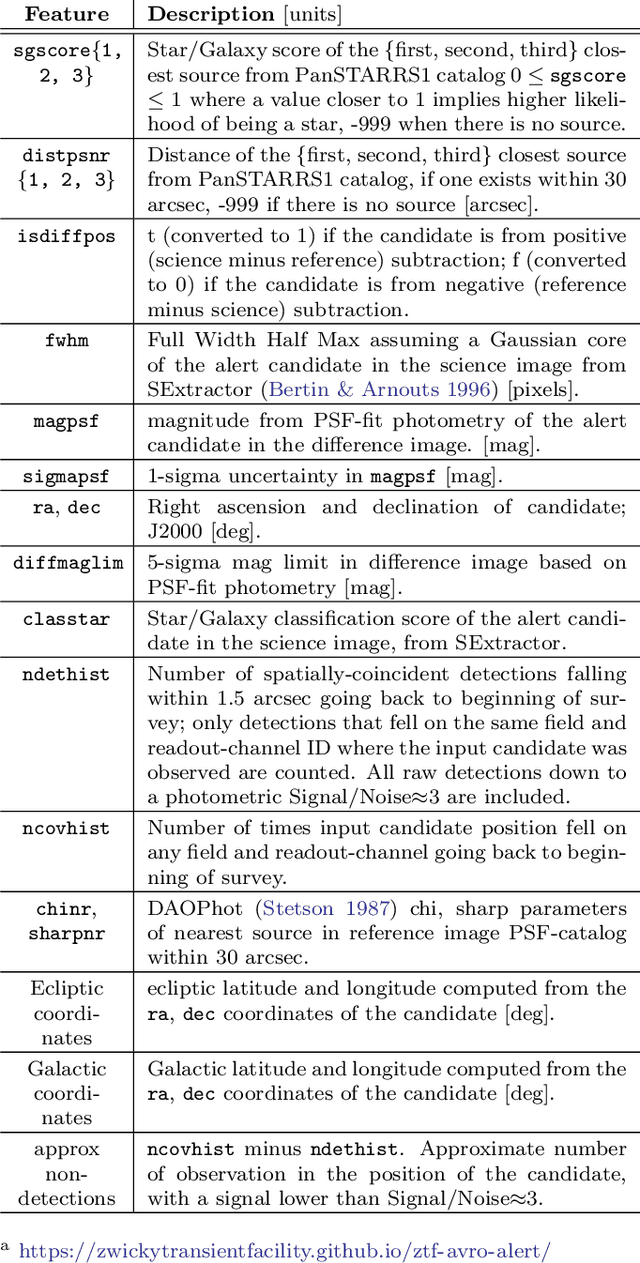
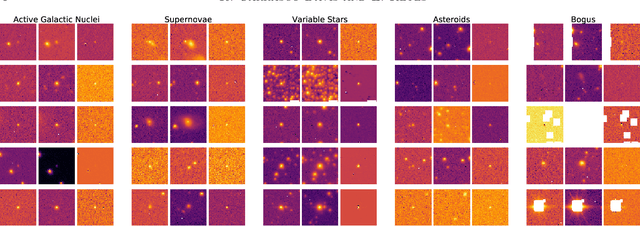
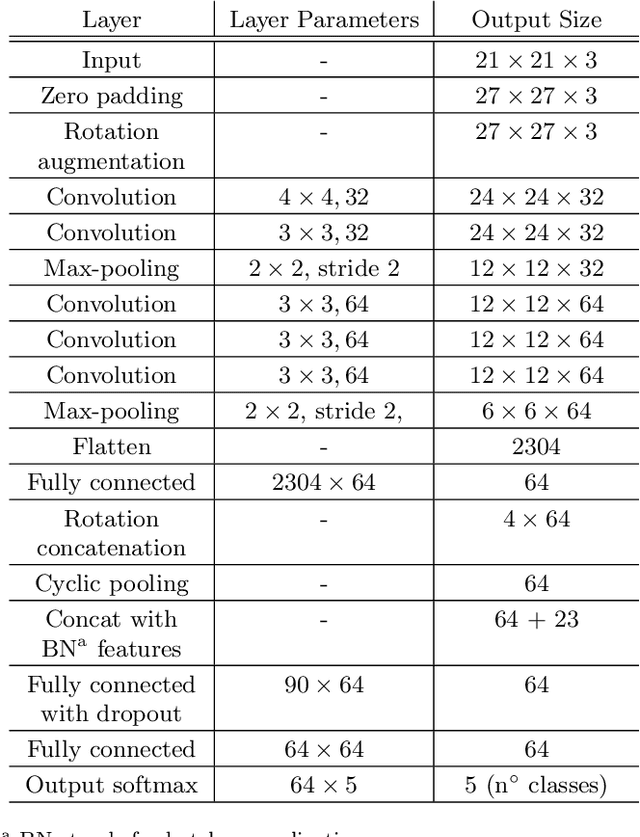
Abstract:We present a real-time stamp classifier of astronomical events for the ALeRCE (Automatic Learning for the Rapid Classification of Events) broker. The classifier is based on a convolutional neural network with an architecture designed to exploit rotational invariance of the images, and trained on alerts ingested from the Zwicky Transient Facility (ZTF). Using only the \textit{science, reference} and \textit{difference} images of the first detection as inputs, along with the metadata of the alert as features, the classifier is able to correctly classify alerts from active galactic nuclei, supernovae (SNe), variable stars, asteroids and bogus classes, with high accuracy ($\sim$94\%) in a balanced test set. In order to find and analyze SN candidates selected by our classifier from the ZTF alert stream, we designed and deployed a visualization tool called SN Hunter, where relevant information about each possible SN is displayed for the experts to choose among candidates to report to the Transient Name Server database. We have reported 3060 SN candidates to date (9.2 candidates per day on average), of which 394 have been confirmed spectroscopically. Our ability to report objects using only a single detection means that 92\% of the reported SNe occurred within one day after the first detection. ALeRCE has only reported candidates not otherwise detected or selected by other groups, therefore adding new early transients to the bulk of objects available for early follow-up. Our work represents an important milestone toward rapid alert classifications with the next generation of large etendue telescopes, such as the Vera C. Rubin Observatory's Legacy Survey of Space and Time.
Feature Selection Strategies for Classifying High Dimensional Astronomical Data Sets
Oct 08, 2013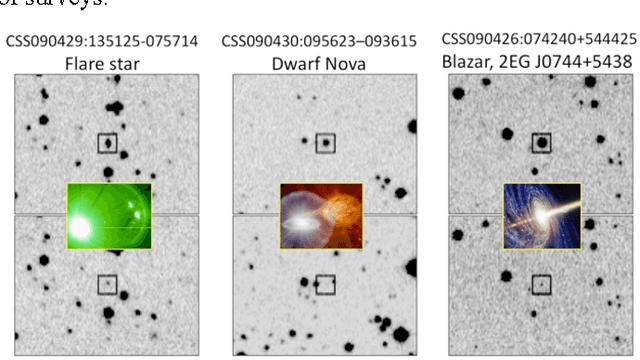
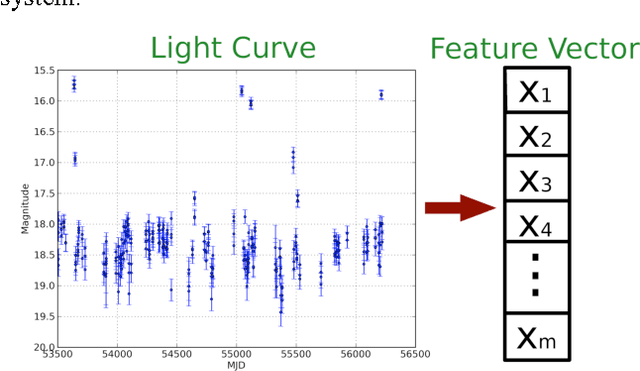
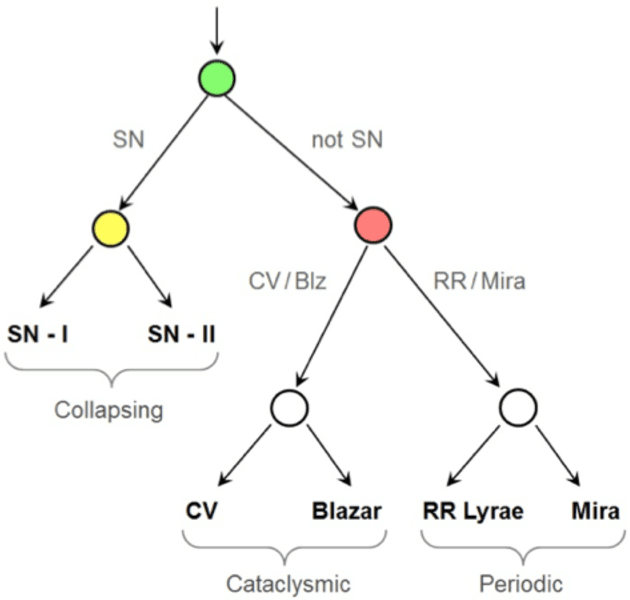
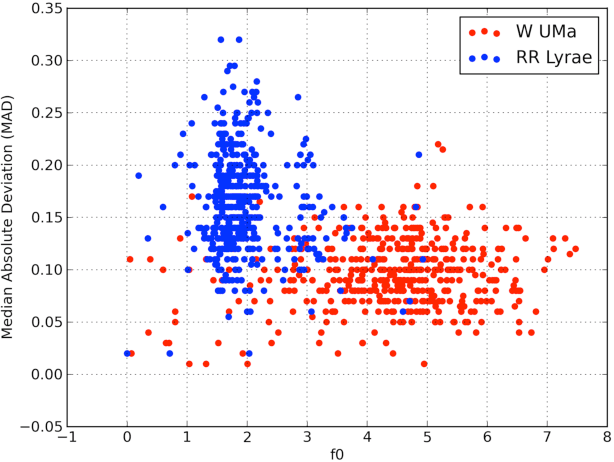
Abstract:The amount of collected data in many scientific fields is increasing, all of them requiring a common task: extract knowledge from massive, multi parametric data sets, as rapidly and efficiently possible. This is especially true in astronomy where synoptic sky surveys are enabling new research frontiers in the time domain astronomy and posing several new object classification challenges in multi dimensional spaces; given the high number of parameters available for each object, feature selection is quickly becoming a crucial task in analyzing astronomical data sets. Using data sets extracted from the ongoing Catalina Real-Time Transient Surveys (CRTS) and the Kepler Mission we illustrate a variety of feature selection strategies used to identify the subsets that give the most information and the results achieved applying these techniques to three major astronomical problems.
 Add to Chrome
Add to Chrome Add to Firefox
Add to Firefox Add to Edge
Add to Edge